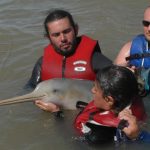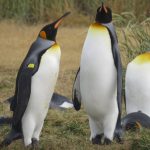← Back
Kelonia : Honoring sea turtles
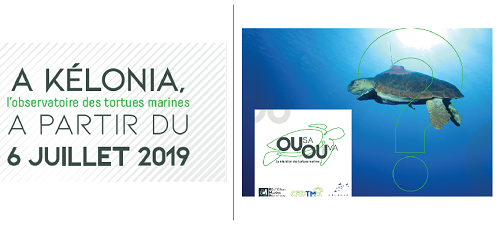
For 15 years, Kelonia, the CEDTM and its partners (Ifremer, CNRS, Universities, TAAF, the French Biodiversity Agency-AFB,…) have equipped nearly 300 sea turtles with Argos tags to study their movements in the Indian Ocean – from the high seas to coastal waters. Their research has resulted in knowledge and understanding as well as protection measures. An exhibition, highlighting fifteen years of collaborative research, was created by French researcher, Mayeul Dalleau (CEDTM), and is open to the general public at Saint Leu, Reunion Island, until December 2019. Don’t miss this compelling tribute to sea turtle migration!
Dedicated to understanding sea turtle migration
As of July 6, 2019, Kelonia, the sea turtle observatory of Reunion Island, proposes a new exhibit: « OUça OUva, la migration des tortues marines ». The objective of this exhibit is to share the results of fifteen years of research with the public and to uncover some of the mysteries surrounding sea turtles in the Indian Ocean.
Large, full-color posters pay a tribute to the beauty of the four species that are studied and sometimes cared for at the observatory. They also shed light on – and provide explanation of – turtles’ movement patterns at sea.

Photos courtesy of Kelonia
More info about marine animals tracking
Tribute to four turtle species
Kelonia and its partners (IFREMER, CNRS, Universities, TAAF, AFB,…) study four turtle species: Green, Hawksbill, Loggerhead and Olive Ridley. Their research focuses on nesting beaches, reproduction strategies, migration processes and orientation between nesting sites and foraging sites, feeding behavior and the impact on biotopes, population genetics and interactions between fisheries and turtles in order to minimize bycatch. 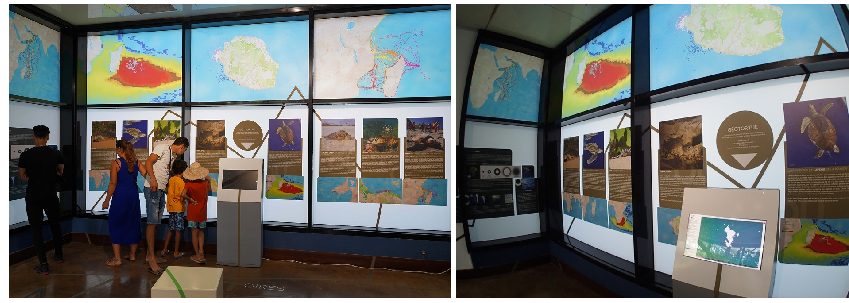
Photos courtesy of Kelonia
Their studies contribute to the elaboration of protection measures in countries within turtle migration zones, such as Madagascar, or the creation of natural reserves, nature parks, or Znieff (Zones Naturelles d’Intérêt Écologique Faunistique et Floristique), in places like Mayotte.
Argos, key technology
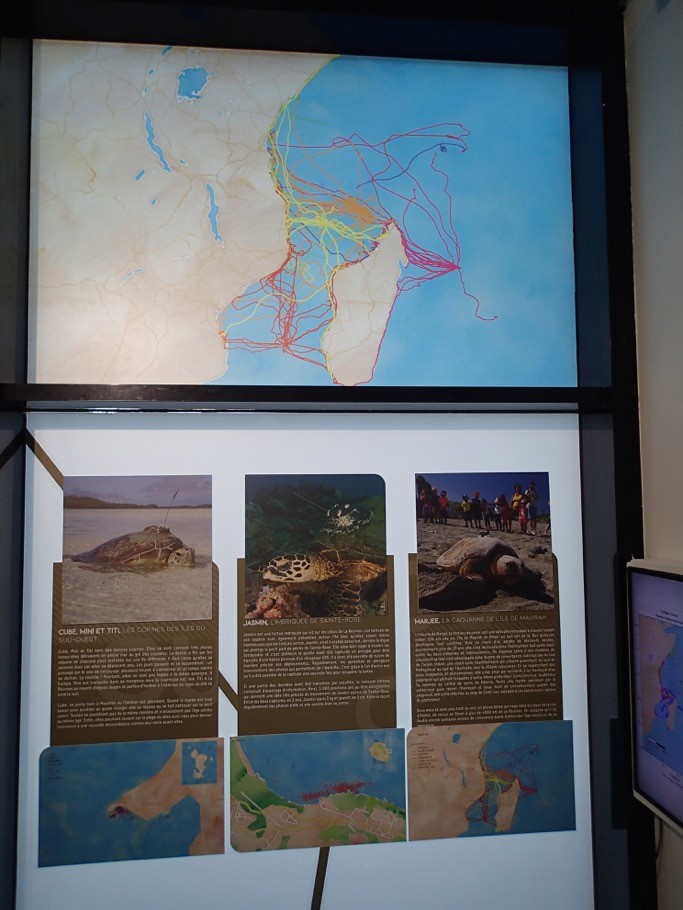
Photo courtesy of Kelonia
The Argos satellite system makes it possible for scientists to track turtle positions along migration routes but also to collect important data during their trajectories. The data collected by Argos PTT and transmitted by the Argos system are as follows :
- time spent at the surface
- dive depths
- water temperature
Congratulations, Kelonia, on this beautiful exhibit that brings together the study of turtles with that of their marine environment. Bravo for fifteen years of collaborative research that have unveiled the mysteries of turtle migration and contributed to their protection in the Indian Ocean.
Find out more about this exhibit by looking at the invitation (in French).
About Kelonia (in French) : https://museesreunion.re/kelonia
About CEDTM (in French) : https://cedtm-asso.org/vegetation
Kelonia
Kelonia is an observatory dedicated to sea turtles designed to sensitize the public to the marine environment. Kelonia participates in marine turtle research and protection programs, to preserve their habitats on Reunion Island and in the Indian Ocean. With 1,500 m3 of seawater pools and learning spaces, Kelonia also hosts a rescue center for hurt or sick sea turtles.
How to get to Kelonia : https://www.museesreunion.re/kelonia/kelonia-infos-pratiques

